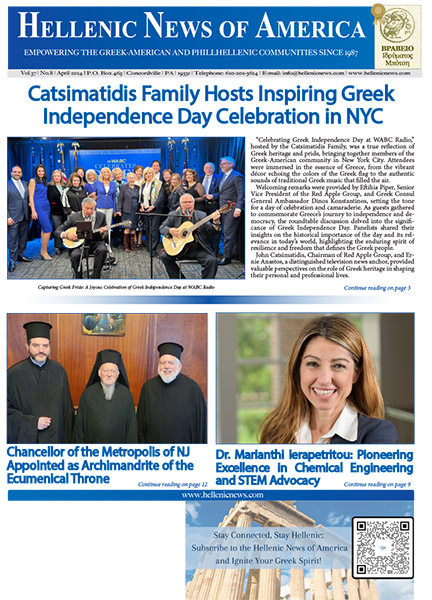
by Marc d’Entremont
Everything about Jordan is rooted in the past but what a past – Moses glimpsed the Promised Land at Mt. Nebo, the Nabataeans carved the world’s first “Wall Street” at Petra, John the Baptist made the Jordan an immortal river, and from the mysterious Wadi Rum direct descendants of the Prophet are the Kingdom’s Hashemite dynasty. Jordan exists in the center of the Levant, a Kingdom of peace bordered by troubled neighbors. The historic role of the Hashemite family has been to live the reality of Bedouin hospitality and that means tourists will have a safe and rare opportunity for in-depth experiences exploring millenniums of natural and man made treasures.
In 2007 the celebrated city of Petra was included in the New Seven Wonders of the World. Being the financial nerve center of the ancient world for over 500 years more than hints at the Hashemite Kingdom of Jordan being heir and protector to a legendary region of the Levant. Petra deserves its celebrity status, but in this first of a two part Hellenic News of America series on the Kingdom, it was but one city on the great caravan routes of history.

Amman
The capital of the Hashemite Kingdom of Jordan, Amman, is built on a series of steep hills at 3,000 feet elevation in the green highlands of the north. Neolithic settlement dates back 8,000 years. As early as 1300 B.C.E. the Ammonites firmly established their city on legendary caravan routes linking Egypt, the Eastern Mediterranean, Persia, India and points beyond.
As part of Alexander the Great’s empire, the Greeks rebuilt the city in the 300s B.C.E. calling it Philadelphia. Today the eastern hills are Old Amman with gold shops, tailors, booksellers, cafes, archaeological excavations, historic sites and a shop selling freshly pressed sugar cane juice all add to the hum of everyday life in the old city’s narrow streets. On the western hills the rapidly growing commercial district with the city’s fine hotels is 21st century Amman.

Why visit: English is increasingly the second language in Jordan and a visitor has no problem navigating the city by taxi or arranging excursions through hotels with local guides.
- The Amman Citadel is the acropolis, and its remains span the city’s classical period from the 2nd century Roman Temple of Hercules, an early 5th century Byzantine church to the 7th century Umayyad Palace whose restored blue domed entrance hall may have been a partially repurposed Byzantine structure.
- The Jordan Archaeological Museum at the Citadel displays the past with vivid exhibitions.
- Down the hill, within short walking distances in the Old City is the remarkably well-preserved 5,000 seat 2nd century Roman Theater.
- The Souk, Amman’s bazaar, is both a place for tourist crafts and the market for the entire array of ingredients for any Middle Eastern dish.
- Tiny, jammed, Hashem Restaurant, open 24 hours, is famous for falafel light as air and in a variation stuffed with sumac scented onions.
- Equally small and famous Habibah Sweets, open early morning to late night, is especially known for Kanafah, a Levantine cheese pastry soaked in syrup.
- The Jordan River foundation, under the patronage of Her Majesty Queen Rania Al Abdullah, has a handsome Showroom on Al-Rainbow Street that features both traditional and contemporary Jordanian arts and crafts.
-

Mezze at Sufra Restaurant, Amman Sufra Restaurant, on Al-Rainbow Street, is in the heart of an affluent but hip district in the old city. The attractive traditional ambiance compliments an extensive menu that features a wide range of Jordanian mezze – small plates – as well as grilled meats. Like a meal anywhere in the Eastern Mediterranean and Middle Eastern culinary world, lunch or dinner at Sufra should be enjoyed slowly, sampling a buffet of mezze – no alcoholic beverages available.
Where to stay: The Sheraton Hotel Al Nabil Amman (alcoholic beverages available) has all the luxury and security expected of an international chain. Security check: All hotels in Jordan are required by law to have strict security in place – guards to check cars entering, metal detectors and bag checks.

Madaba
The 4,500-year-old hill city of Madaba – “The City of Mosaics” – is but a 30-minute drive from Amman, and the biblical treasure of Mt. Nebo is only 6 miles distance. Madaba, along with Amman and Petra, was located on the ancient King’s Highway, the major trade route with Egypt that connected as well to both the Spice Route and the Silk Road.
Why visit: Under the Roman and Byzantine Empires – 2nd through the 8th centuries – Madaba reached its height of commercial influence. The variety of nearby multicolored minerals from the Levant’s unique geology gave rise to a prized mosaic industry. Elaborate mosaics decorated the floors and walls of Madaba temples, churches and palaces.
- The late 19th century reconstruction of the 7th century Orthodox Church of St. George exposed the remnants of the Mosaic Map of the Holy Land — the oldest known pictured map of the biblical region – it originally measured 1,000 square feet.
-

Madaba Arts & Handicrafts Center The art of the mosaic has undergone resurgence in this mountain city. The road between Madaba and nearby Mt. Nebo is lined with shops and studios of artists and craftsmen. The Jordan River Foundation and the Ministry of Tourism have encouraged the ongoing revival of traditional arts and have been instrumental in their commercial success.
- Fine workmanship with free international shipping can be found at the Madaba Arts & Handicrafts Center on the road to Mt. Nebo.
- From the top of Mt. Nebo visitors can glimpse the Promised Land. On a clear day, not guaranteed, Jerusalem and Bethlehem are visible on the horizon. The Mt. Nebo Visitors Center museum and excavations of a 6th century Byzantine monastery display superb examples of ancient mosaics.
Where to dine: In a 19th century house close to St. George Church, Haret Jdoudna restaurant offers a full range of traditional Jordanian mezze and grilled dishes – no alcoholic beverages available. The popular restaurant is attractive with plants and courtyards and offers music as well as arts and crafts for sale.

Jerash
Jerash was not the first great city of the Levant. Damascus predates it by over a thousand years. Although villages existed in the area, it was Alexander the Great who started constructing the city in the 300s B.C.E. after expanding his Greek empire into the Levant. Petra to the south was already the region’s commercial powerhouse, but Jerash was poised by the Roman era to eclipse that legendary city.

Jaresh came into its own when a new Roman road linked the city to the commercial caravan centers of the Middle East. The already impressive Greek city of temples, colonnaded streets and theaters was renovated and expanded by the Romans. When the empire morphed into the Christian Byzantine era Jerash grew with the times. Heavily damaged by mid-8th century earthquakes and financially weakened by external pressure on the Byzantine Empire, the city declined and remained a greatly diminished settlement until the 1800s, but never totally abandoned.
Why visit: Located just 25 miles north of Amman, the archaeological site is considered the finest example of Greco-Roman architecture outside of Athens and Rome.
- The massive Triumphal Arch of Hadrian still dominates the World Heritage site that’s administered by the Jerash Antiquities Department.
- Visitors should schedule at least several hours to explore the theaters, temples, hippodrome where chariot races were once held and marvel at artistic detail from Greek to Islamic. The visitor’s center contains a souk (market), café and restrooms.
- If visiting in late July and August check the Jordan Tourism web site for special events.

Petra
The Nabataeans carved the massive city of Petra into the red sandstone cliffs on the flanks of Jordan’s vast dry Wadi Araba in the 300s B.C.E. at the epicenter of the fabled Spice Route and Silk Road creating the ancient world’s financial hub. Hidden in its steep canyon location, Petra was rediscovered in the great wave of European archeological interest of the 19th century and by Hollywood in the 1980s – Indiana Jones.
Why visit: Named a UNESCO World Heritage Site in 1985 and chosen in 2007 as one of the New Seven Wonders of the World, Petra deserves its reputation as the top tourist attraction in the Hashemite Kingdom of Jordan.
- The visitor’s center provides multi-lingual self-guided tour booklets, and it’s easy to arrange for a personal tour guide.
- With an international mix of visitors, the carriage, horse, donkey and camel rides, the craft and trinket stalls, local musicians and water hawkers add a visceral caravan atmosphere to a serious archaeological site.
-

first glimpse of Al Khaznch, Petra, Jordan The dramatic main entrance through a long, towering, narrow gorge – a Siq – was a defensive and psychological tour de force. Eyes are focused on the first building that comes into view, the impressive Al Khaznch. Popularly known as the Treasury, its purpose was more likely ceremonial – shock and awe.
- The Nabataeans mastered an efficient system of dams, cisterns and water channels carved in rock that provided this desert city with a profitable surplus of water.
- In the Roman era the city became the capital of the empire’s Arabian province. The Romans added an impressive theater, colonnaded market and freestanding temples.
- If you wish admission includes a round trip horse ride to the entrance of the Treasury (approximately 1 mile). Horse drawn carriage, donkey and camel rides are available for a fee to the Treasury entrance and/or around the archeological site (an additional 2 to 3 miles.) You may want to walk down to the site and ride back up when finished touring.
- Walking distances round trip from the visitor’s center and around the site are approximately 6 miles. Including the Monastery, 10 miles.
- Bottled water is available from the many vendors within the site. Keeping well hydrated is a general tip for travel anywhere in Jordan.
Where to Stay: Moevenpick Resort Petra (alcoholic beverages available) is a modern luxury hotel by the famous Swiss Moevenpick ice cream company. It’s conveniently located directly across from the Petra visitor’s center.

Nightlife: The Cave Bar, just outside the visitor’s center, is built into a 2,000-year-old Nabataean tomb. The natural rock, carved pillars, ambient lighting, good drinks and wine make The Cave perfect for reflecting on a day of exploration.
Next month: part two – Four Serene Destinations in timeless Jordan
Travel with Pen and Palate to Greece and the world with Marc d’Entremont every month in the Hellenic News of America
Disclosure: the author was a guest of Jordan Tourism Board North America – tour arrangements made in conjunction with the International Food, Wine & Travel Writers Association. Royal Jordanian Airlines flies non-stop to Amman from Chicago and New York.






